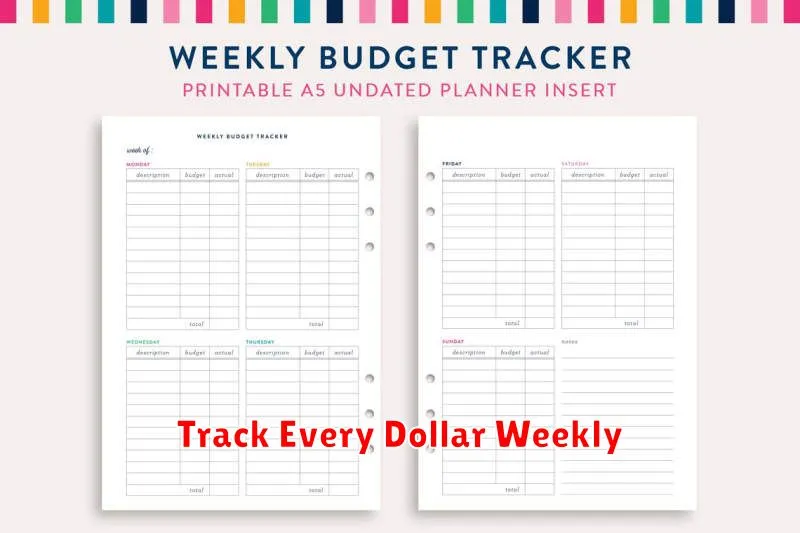Are you tired of overspending each month and struggling to meet your financial goals? Do you dream of building a strong financial foundation, but feel overwhelmed by the complexities of budgeting? This comprehensive guide, “How to Stick to Your Budget Every Month,” provides practical, actionable steps to help you gain control of your finances and finally achieve financial freedom. Learn how to create a realistic budget, track your spending effectively, and develop strategies for saving money and reducing debt. Discover the secrets to consistent budgeting and unlock the path to a more secure and prosperous future.
This article will equip you with the essential tools and techniques for mastering your monthly budget. We’ll explore various budgeting methods to find the perfect fit for your lifestyle and financial situation. You’ll learn how to identify and eliminate unnecessary expenses, prioritize your financial priorities, and set achievable savings goals. We’ll also address common budgeting challenges and provide proven solutions to help you stay on track. By the end of this guide, you’ll be confident in your ability to manage your money effectively and achieve your long-term financial objectives.
Set Realistic and Flexible Limits
Creating a budget requires setting limits on spending in various categories. However, the key to success isn’t rigid restriction; it’s about establishing realistic and flexible boundaries.
Begin by honestly assessing your income and expenses. Track your spending for a month to identify where your money actually goes. This will provide a clearer picture of your spending habits and help you set achievable targets. Don’t aim for perfection immediately; start with a realistic assessment of your current financial situation.
When setting limits, consider incorporating both fixed and flexible categories. Fixed expenses like rent or mortgage payments are relatively predictable, while flexible expenses like dining out or entertainment allow for more adaptability. Allocate a specific amount to each category, but remember to build in some flexibility.
Flexibility is crucial. Life throws curveballs; unexpected expenses inevitably arise. Instead of a strict, inflexible budget, consider incorporating a cushion or buffer for unforeseen costs. This buffer prevents you from derailing your entire budget when facing unexpected repairs or medical bills. It provides peace of mind and allows for adjustments without complete budget breakdown.
Regularly review and adjust your limits as needed. Life circumstances change, and your budget should reflect those changes. Perhaps your income increases, allowing for higher spending limits in certain areas. Or, maybe you need to tighten your belt in a specific category due to unforeseen circumstances. The ability to adapt your budget to your evolving financial reality is key to long-term success.
Use Envelopes or Digital Systems
Sticking to a budget requires tracking your spending. Two effective methods are using the cash envelope system or a digital budgeting app. Both offer advantages in helping you manage your finances.
The cash envelope system involves allocating cash for specific categories (groceries, entertainment, etc.) into separate envelopes. Once the cash in an envelope is gone, that category’s spending is finished for the month. This provides a highly visual and immediate understanding of your spending limits.
Alternatively, numerous digital budgeting apps offer features such as automated transaction categorization, spending visualizations, and goal-setting tools. These apps provide a convenient and comprehensive way to monitor your budget and make informed financial decisions. The choice depends on your personal preference and comfort level with technology.
Regardless of your chosen method, consistent tracking is key. Regularly review your spending against your budget to identify areas where adjustments may be necessary. This proactive approach ensures you stay on track and avoid overspending.
Avoid Impulse Spending Triggers

Sticking to a budget requires understanding and managing your spending habits. A crucial step is identifying and avoiding impulse spending triggers – those situations, emotions, or environments that lead to unplanned purchases.
One common trigger is emotional spending. Feeling stressed, sad, bored, or even happy can lead to impulsive buys as a way to cope or celebrate. Becoming aware of your emotional state before making purchases is key. Consider alternative coping mechanisms, such as exercise, meditation, or talking to a friend, instead of retail therapy.
Environmental triggers also play a significant role. Crowded stores, enticing displays, and aggressive sales tactics are designed to encourage impulse purchases. Shopping with a clear list and sticking to it can help you stay focused. Consider shopping online to minimize exposure to visual temptations.
Convenience is another major factor. Easy access to online shopping and readily available credit can blur the lines of budgeting. Setting limits on online spending and practicing mindful consumption, taking the time to weigh the necessity of a purchase, are crucial steps in mitigating this trigger.
Finally, recognizing peer pressure as a trigger is important. Avoid shopping with friends who tend to overspend, as their habits can influence yours. Remember, your budget is personal, and you shouldn’t feel obligated to make purchases you can’t afford to impress others.
By identifying and actively avoiding these impulse spending triggers, you’ll significantly increase your chances of achieving your financial goals and sticking to your budget each month.
Involve the Whole Family
Budgeting isn’t a solo endeavor; it’s a family affair. When everyone understands the financial goals and limitations, they’re more likely to cooperate and contribute to achieving them. This fosters a sense of shared responsibility and teamwork.
Age-appropriate involvement is key. Older children can participate in creating the budget, understanding where money comes from and where it goes. Younger children can be involved in simpler tasks, such as choosing less expensive options at the grocery store or helping to save money by turning off lights.
Regular family meetings to discuss the budget can be highly beneficial. This provides a platform to openly discuss spending habits, identify areas for improvement, and celebrate successes. It also allows everyone to voice their needs and concerns, ensuring that the budget is fair and realistic for all family members.
Consider implementing a family allowance system. This allows each family member to manage a small amount of money, teaching valuable lessons about budgeting and financial responsibility from a young age. This instills good habits early on and empowers them to make informed decisions about their spending.
Remember, involving the whole family promotes open communication and creates a shared understanding of financial priorities. This collaborative approach can significantly improve the chances of sticking to your budget and achieving your long-term financial goals.
Plan for Irregular Expenses
Sticking to a budget requires accounting for more than just your monthly recurring expenses. Many households face irregular expenses that can significantly impact their financial stability if not properly planned for. These are expenses that don’t occur on a regular schedule, making them easy to overlook when creating a budget.
Examples of irregular expenses include car repairs, home maintenance (like a new roof or appliance replacement), medical bills (especially if you have a high deductible health plan), and holiday spending. Unexpected events, such as job loss or a family emergency, can also lead to unforeseen expenses.
To effectively manage these irregular expenses, it’s crucial to create a contingency fund. This fund acts as a safety net, allowing you to cover unexpected costs without derailing your regular budget. A general rule of thumb is to aim for 3-6 months’ worth of living expenses in your emergency fund. Start small and gradually build up your savings. Even small, consistent contributions make a difference.
Beyond the emergency fund, consider incorporating a line item in your monthly budget specifically for anticipated irregular expenses. For example, if you know your car needs new tires in the coming year, set aside a small amount each month to save for this predictable expense. This approach helps to spread the cost over time, reducing the financial impact when the expense becomes due. Similarly, if you expect higher holiday spending each year, start saving early to avoid accumulating debt during the holiday season.
Careful planning and proactive saving for irregular expenses are essential for maintaining a healthy financial situation. By anticipating potential costs and setting aside funds, you can avoid the stress and financial strain of unexpected bills and maintain a consistent budget throughout the year.
Track Every Dollar Weekly

Sticking to a budget requires consistent monitoring. While monthly reviews are helpful for overall progress, weekly tracking offers a more granular view of your spending habits. This allows for quicker identification of areas where you might be overspending and provides the opportunity to make immediate adjustments.
Consider using a budgeting app, a spreadsheet, or even a simple notebook to record all your income and expenses each week. Categorize your spending to easily see where your money is going. Common categories include housing, transportation, food, entertainment, and debt payments. Be thorough; even small purchases add up.
The act of writing down every transaction, no matter how insignificant it may seem, increases your awareness of your spending patterns. This mindfulness is crucial for curbing impulsive purchases and staying within your budget. Regular weekly tracking empowers you to make informed decisions about your finances and proactively manage your money.
By consistently tracking your finances weekly, you gain valuable insights into your spending habits and can swiftly address any potential overspending before it escalates into a larger problem. This proactive approach significantly improves your chances of achieving your financial goals and maintaining a healthy budget.

